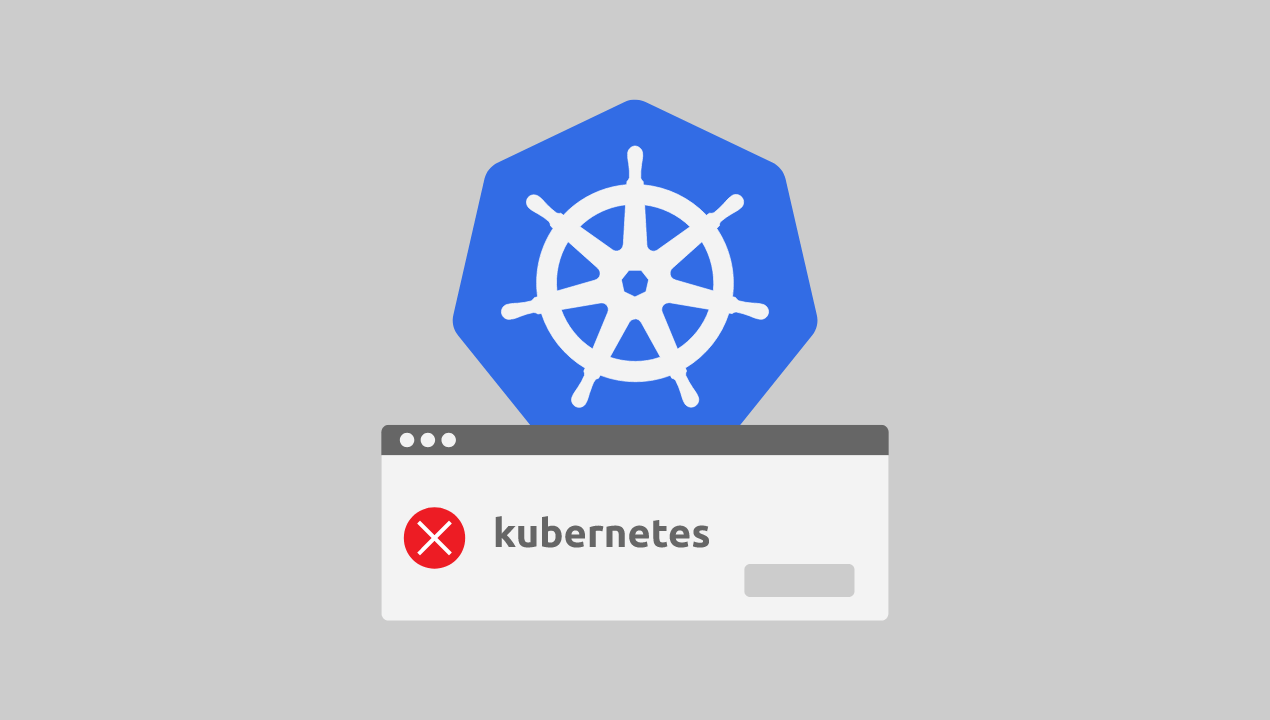Common Real-Time Errors Faced by DevOps Engineers in Kubernetes
 Aniket Bhola
Aniket Bhola
Kubernetes (K8s) is a powerful container orchestration tool that has revolutionized the way applications are deployed and managed. However, as with any complex system, DevOps engineers frequently encounter real-time challenges while working with Kubernetes. In this article, we'll explore some common Kubernetes errors and their solutions.
1. CrashLoopBackOff
Error Message: CrashLoopBackOff
What is “CrashLoopBackOff“ error:
Your container keeps crashing, and Kubernetes continuously attempts to restart it, but it fails to recover. The container starts and stops in a loop.
Possible causes:
Bugs in your app causing it to crash.
Insufficient resources (CPU, memory) allocated.
Misconfigured environment variables or secrets.
Solution:
Check logs:
kubectl logs <pod-name> -n <namespace>Describe the pod:
kubectl describe pod <pod-name> -n <namespace>Verify resource limits in YAML files.
Ensure necessary environment variables and secrets are correctly configured.
2. ErrImagePull
Error Message: ErrImagePull
What is “ErrImagePull” error:
Kubernetes fails to pull the container image from the registry, preventing the pod from starting.
Possible causes:
Docker image does not exist.
Network issues preventing image pull.
Solution:
Verify if the image exists:
docker pull <image>Ensure your cluster has internet access.
Check for typos in the image name.
3. ImagePullBackOff
Error Message: ImagePullBackOff
What is “ImagePullBackOff”:
Kubernetes repeatedly fails to pull the container image and backs off before retrying, delaying further attempts.
Causes:
Incorrect container image name or tag.
Image registry authentication failure.
Private registry access issue.
Solution:
Verify the image name:
kubectl describe pod <pod-name>Authenticate to the private registry if needed.
Ensure Docker Hub or other registry credentials are correctly configured.
4. Pending Pods
Error Message: Pending
What is Pending Pod error:
Your Pod is stuck in the "Pending" state and won’t schedule.
Causes:
Insufficient worker nodes/resources.
NodeSelector or Toleration issues.
PersistentVolume claims not binding.
Solution:
Check node capacity:
kubectl get nodes -o wideView detailed pod info:
kubectl describe pod <pod-name>Ensure PersistentVolume claims match available storage.
5. OOMKilled
Error Message: OOMKilled
What is “OOMKilled”’ error:
The container exceeded its memory limit, causing the Kubernetes Out of Memory (OOM) killer to terminate it.
Causes:
Container exceeded memory limits.
Memory-intensive application running with low allocation.
Solution:
Increase memory limits in deployment YAML:
resources: limits: memory: "512Mi" requests: memory: "256Mi"Monitor usage:
kubectl top podOptimize the application’s memory consumption.
6. Node Not Ready
Error Message: NotReady
What is Node Not Ready error:
The node is in an unhealthy state or unreachable, preventing it from scheduling or running pods.
Causes:
Node is out of resources.
Network issues.
Kubelet is down.
Solution:
Check node status:
kubectl get nodesSSH into the node and restart Kubelet:
sudo systemctl restart kubeletVerify CNI plugins are running correctly.
7. Node Disk Pressure
Error Message:
Conditions:
Type Status Reason Message
---- ------ ------ -------
DiskPressure True KubeletHasDiskPressure kubelet has disk pressure
What is “DiskPressure“:
The node is experiencing high disk usage, triggering Kubernetes to restrict pod scheduling and evict existing pods.
Causes:
Node is running out of disk space.
Logs or temporary files consuming disk storage.
Misconfigured disk resource allocation.
Solution:
Check node disk usage:
df -hIdentify large files and clean up:
du -sh /* | sort -hAdjust disk eviction threshold settings in the Kubelet config.
Increase disk space if necessary.
8. Kubelet Failures
Error Message:
kubectl describe node
Conditions:
Type Status Reason
---- ------ ------
Ready False KubeletNotReady
What is Kubelet Failure:
The Kubelet on a node has failed or stopped running, preventing the node from managing containers and communicating with the cluster.
Causes:
Kubelet service is not running.
Misconfigured system resources.
API server communication failure.
Solution:
Restart the Kubelet service:
sudo systemctl restart kubeletCheck logs for errors:
journalctl -u kubelet --no-pager | tail -50Ensure API server is reachable:
kubectl cluster-infoVerify that
/var/lib/kubelethas sufficient disk space.
Conclusion
Kubernetes is a robust but complex system, and real-time errors can disrupt workflows. By understanding common errors and their resolutions, DevOps engineers can troubleshoot efficiently and maintain high availability of applications. Keep debugging, keep learning, and happy K8s-ing!
Subscribe to my newsletter
Read articles from Aniket Bhola directly inside your inbox. Subscribe to the newsletter, and don't miss out.
Written by
